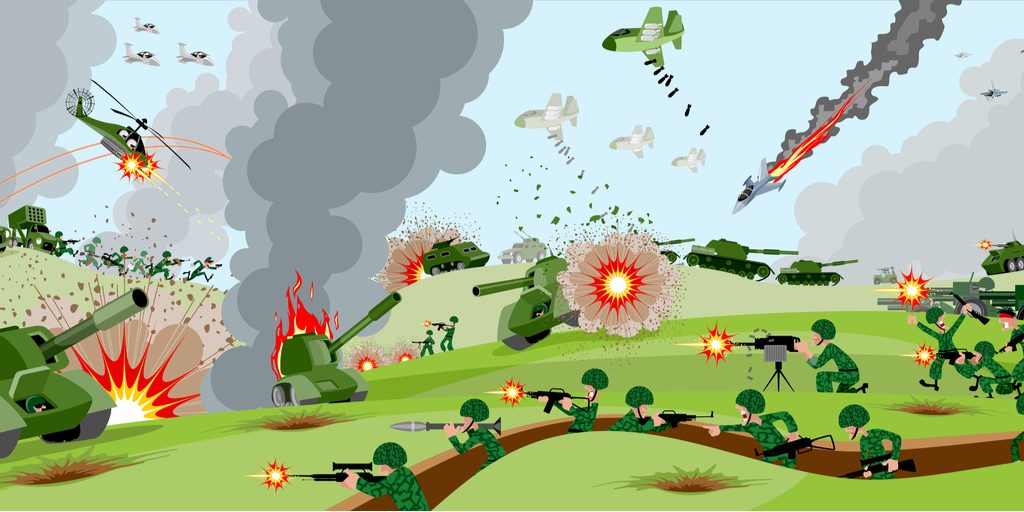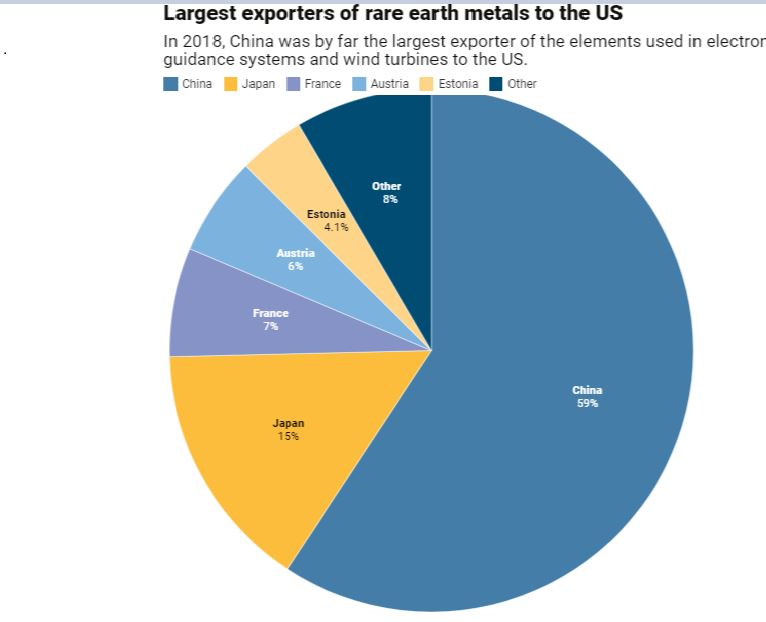
By Michael O’Neill
There are no bombs dropping, artillery firing, or bullets flying, but China and the United States are at war. This is a war of words and tariffs, and the American’s have the upper hand. They import $557.9 billion worth of goods from China and as of May 10, those imports are subject to a 25% tariff. On that same date, President Trump ordered the United States Trade Representative to begin the process of raising additional tariffs on essentially all remaining imports from China. That’s worth another $300 million.
China retaliated by raising tariffs on $60.0 billion of US imports from 10% to 25%, but they don’t kick in until June 1. China is handicapped in the tariff war because they don’t import enough from America to retaliate dollar for dollar, but it has other weapons at its disposal.
China is the world’s largest exporter of rare earth minerals. The US is its biggest customer. “The Rare Earth Technology website describes these minerals as such: “Rare earths are a series of chemical elements found in the Earth’s crust that are vital to many modern technologies, including consumer electronics, computers and networks, communications, clean energy, advanced transportation, health care, environmental mitigation, national defense, and many others.”
China could leverage this export clout. President Xi Jinping may have hinted at such a move when he and some of his trade negotiators had a photo-op at a rare earth mining facility, May 20. However, an RBC analyst pointed out that rare minerals are not rare, and the last time China tried to limit exports, it lost market share.

Source: SouthChina Morning Post
China could impose curbs on sales by US invested companies in China, as suggested by one analyst quoted in The South China Morning Post. (SCMP) Sales by these entities total $481 billion.
China can also devalue their currency. They already have, to some extent, as the yuan has dropped 2.5% since the beginning of May. The bulk of that move occurred after the announcement of the higher US tariffs.
There isn’t much of a chance that this trade war will end soon, mainly because no one is at the negotiating table. Treasury Secretary Steven Mnuchin is “hopeful” that the two sides will get together around the end of June. For that to happen, according to the China Ministry of Commerce, “If the U.S. would like to keep on negotiating it should, with sincerity, adjust its wrong actions. Only then can talks continue.” President Trump and Xi Jinping are expected to meet at the June 28-29 G-20 conference which is about when the next batch of tariffs on the remaining $300 million of Chinese imports will go into effect.
Trade war tensions have escalated since the Federal Open Market Committee (FOMC) met on May 1. US/China trade discussion optimism had reached an apex before the meeting. Analysts believed they had reached a turning point, with agreements on many key issues. There were high hopes for continued progress in the next trade talk session and speculation that a draft agreement could be reached by the end of May. Those hopes were reflected in the FOMC minutes, released May 22. “A number of participants observed that some of the risks and uncertainties that had surrounded their outlooks earlier in the year had moderated, including those related to the global economic outlook, Brexit, and trade negotiations”. That is not the case today. The US/China trade talks have reached an impasse.
Brexit risks haven’t diminished; they have worsened. UK Prime Minister Theresa May’s attempt to sell her “new Brexit plan” to her party were on crushed on Tuesday. Her attempt to garner cross-party support, alienated her party and some members quit. Others are calling for Ms May’s resignation.
The existing state of the US/China trade talks and UK political concerns around and the FOMC minutes suggests that while the Fed is still hopeful, its dovish bias remains.
Canada and Mexico were collateral beneficiaries when the US/China trade talks soured. President Trump decided that the United States Mexico Canada Agreement (USMCA) on trade needed to be ratified and to facilitate Canada’s participation, tariffs on Canadian steel and aluminum were repealed.
It is good news for Canada but unlikely to dissuade the Bank of Canada (BoC) from their dovish policy stance when they meet on May 29. The BoC blamed its slow pace of monetary policy normalization on “ongoing uncertainty related to trade conflicts which undermined business sentiment and activity.” Canada’s growth prospects may have improved somewhat, but the global outlook has worsened.
It is not quiet on the trade war front, and until there are China and the US return to the negotiating table, FX markets will continue to gravitate towards a risk aversion stance.





